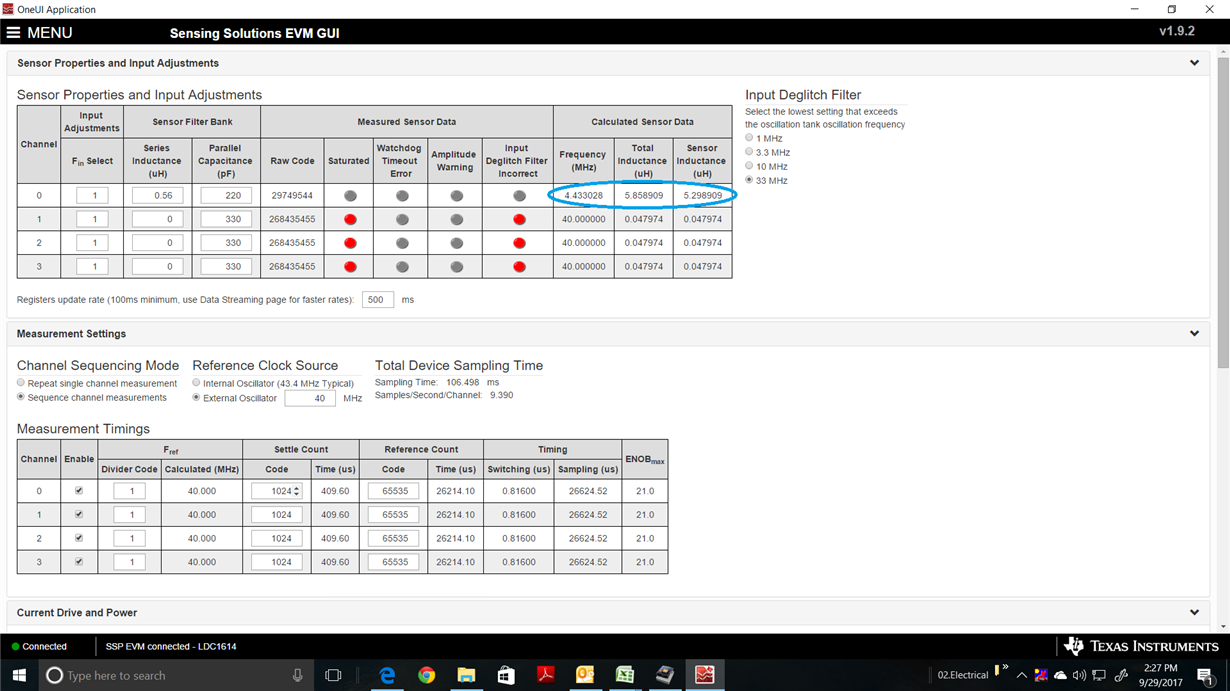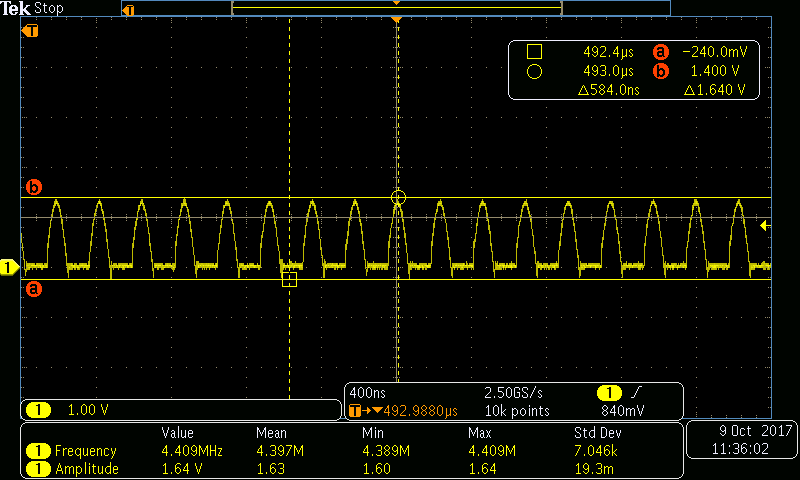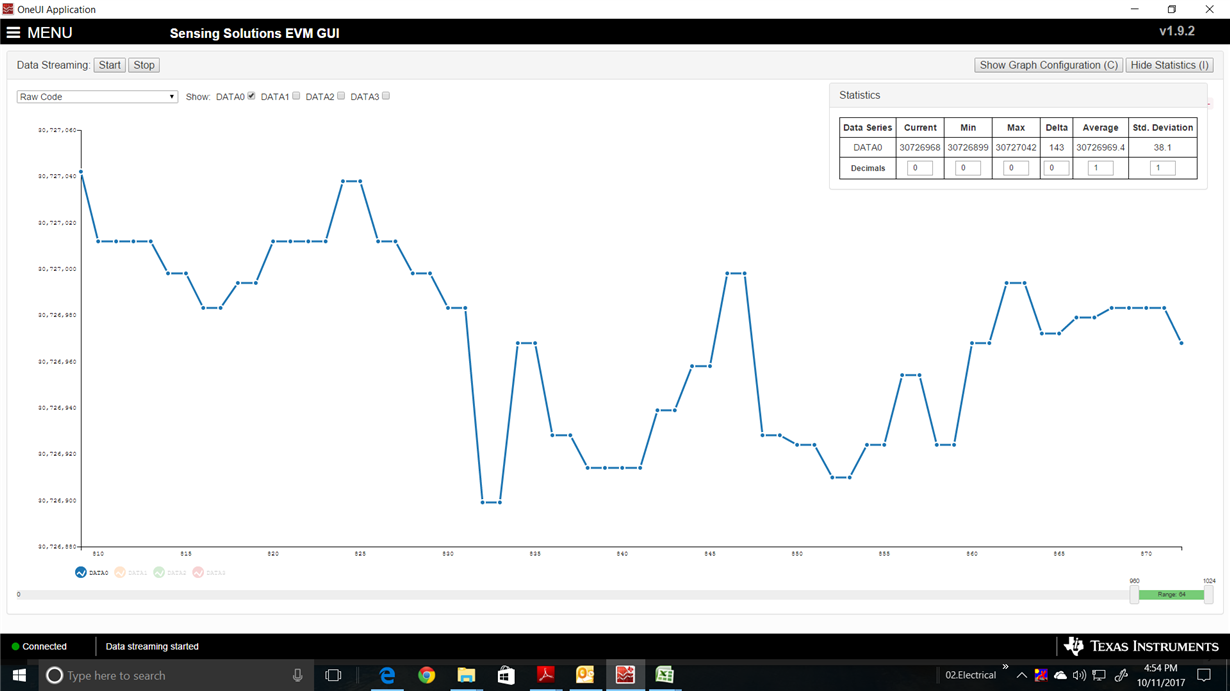Other Parts Discussed in Thread: LDC1614
Hi,
I am using LDC1614 EVM and Q coil (Dia = 6mm) from LDCCOIL EVM for analysis. The inductance and frequency values which I am seeing in GUI are not matching with theoretical values. The below pictures shows calculated values and the real inductance and frequency values getting in GUI. I am using 560nH series inductor and 220pF capacitor on 6mm coil.
Calculated values
L with no target = 3.957uH
Frequency = 5.339Mhz
GUI values
L with no target = 5.2989uH excluding series inductance
Frequency = 4.433Mhz
I have attached picture of setup
Please help me to find the reason why theoretical values are not matching with GUI values.






